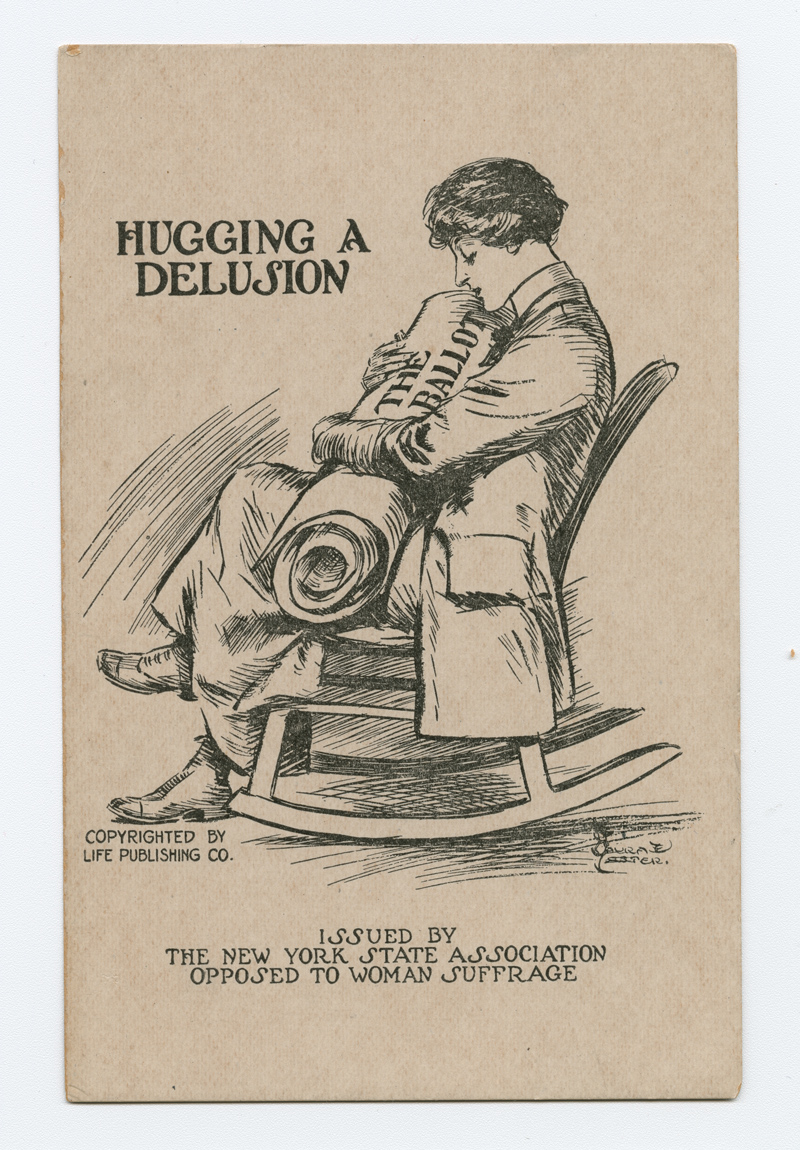Political cartoons have long served to provoke public debate, illustrating opinions of the day for the masses. From early in the 19th century, arguments over voting rights—who votes and who counts the votes—have been depicted in cartoons, especially with the rise of illustrated newspapers and magazines with a national circulation before the Civil War.
The 19th-century ballot box was a hand-blown glass bowl contained in a frame to make voting “transparent.” It was an attempt to eliminate ballot box stuffing, but it became a ubiquitous symbol in political cartoons for voting rights or, as in this case, the abuse of voting rights.
Featuring examples of published cartoons from the MHS collections as well as other libraries and foundations, this exhibition illustrates how cartoonists helped to tell the story of voting rights in the United States. In addition to many drawings by Thomas Nast, the most influential American political cartoonist in the decades following the Civil War, this exhibition features modern reinterpretations of these topics by editorial cartoonists, including Herblock (Herbert Block), Tom Toles, Bill Mauldin, and the work of current Boston-area artists.
EXPANDING VOTING RIGHTS
Voting as a Civil Right
Thomas Nast, a young illustrator for Harper’s Weekly, gained an independent voice as a political cartoonist during the Civil War and Reconstruction and began to draw cartoons sympathetic to Black civil rights, including voting rights. The ratification of the 15th Amendment in 1870 did not end the struggle for voting rights. As Thomas Nast turned away from the long campaign he had waged with his pen, others, including Henry Jackson Lewis, a Black editorial cartoonist, carried the argument forward in the 1890s. Almost 100 years after Nast drew The Georgetown Election, a cartoon in support of Black voting rights, Herbert Block (“Herblock”) reiterated Nast’s argument in his cartoons from the 1950s and 1960s.
Women's Suffrage
Both pro– and anti–women’s suffrage organizations used images, including cartoons, to buttress their competing claims to represent the political views of women. Cartoonists—almost all men—lampooned women reformers and the organizations that they founded, even in publications sympathetic to women’s rights. Suffragists were depicted either as humorless “old maids” or as wild-eyed radicals. Meanwhile, a small cadre of politically active women cartoonists—and their male allies—drew in support of women’s suffrage.

Hugging a Delusion. Postcard by Laura E. Foster, 1915